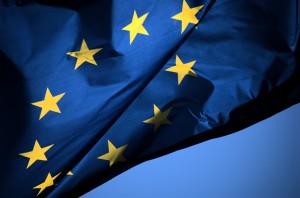Earlier this week, the Latvian parliament voted 64-30 to pass the 2010 budget, including sharp cuts in public spending and increased taxation.
Such an austere budget will undoubtedly leave no one happy. Even in a country reluctant to protest students, trade unions, and even bikers have held demonstrations outside the Saeima against some of its measures.
Yet the Latvian government could not avoid such tough actions. To receive the next installment of a €7.5 billion financial rescue loan from the International Monetary Fund and European Union, Latvia must reduce its deficit by 500 million lats (€706 million). To that effect, the budget will include several measures to cut expenditure by approximately 300 million lats (€423 million) and raise revenue by 200 million lats (€282 million).
Downward spiral
Tighter government spending and higher taxes mean nasty changes are in store. Public workers will receive deeper salary cuts, including teachers, police, nurses, and others; the flat tax will rise as well as taxes on earned interest income, real estate, cars and motorcycles, deposits, capital gains and a variety of others.
Every sector of Latvian society will be affected, directly or indirectly. If the budget is any indication, then Latvians can expect life to get worse before it gets better. The poor, patients, students, seniors and others that rely on social programs are bearing the brunt of the cuts. As businesses tighten their belts to pay higher taxes, jobs are at risk. Worse, the taxes may run small businesses out of operation and stifle new ones from opening. As the public begins to save more, they will be withholding money from the economy; subsequently, the economy will fall more, people will feel the need to save more, and a vicious cycle will ensue. Unemployment may hold as one of the highest rates in the EU and GDP may continue to decline. Perhaps the bottom has not yet been hit.
Hope from Brussels
Little can be done to improve Latvia’s hardships in the short-term — the damage is done. No matter how unpopular, the budget is necessary. But a new EU policy directive may hold hope for the near-future. On Oct. 30, the European Council adopted the EU Strategy for the Baltic Sea Region, a proposal pushed by the Council’s Swedish Presidency.
For the first time, an EU policy identifies a “macro-region,” a multi-country area with intertwined political and economic interests. It also tailors specific measures for addressing the region’s particular challenges. Denmark, Estonia, Finland, Germany, Latvia, Lithuania, Poland and Sweden will directly participate in the project.
The strategy lays out four pillars, or goals, which are to make the region environmentally sustainable, prosperous, accessible and attractive, and safe and secure. Member states have agreed to take the lead in implementing 15 policy areas, divided amongst themselves, fitting within these four goals.
The Commission has also presented approximately 80 specific projects to be undertaken to achieve the goals. Among the actions are plans to build a high-speed rail system from Poland to Estonia, better integrate energy markets, clean up the Baltic Sea, strengthen small and medium businesses, and improve research and innovation among a host of others.
The strategy is precisely what is needed to establish key infrastructure, foster conditions for growth and stabilize economic security in the region. With such measures Latvia and its neighbors can become a viable, prosperous part of Europe once again. The policy recognizes the interdependence of the Baltic Sea countries and that the health of one country cannot be separated from the health of the region. It does not set the three Baltic states apart, but includes them with its EU neighbors to underscore the idea that their collective success depends on strengthening their mutual economic, political, and social interests.
No new funding has been committed, so the strategy will serve to better coordinate cooperation among member states using structural and cohesion funds already set aside for the Baltic Sea Region. Through pooling resources with neighbors and addressing shared challenges, the entire region stands a fighting chance at a brighter future.
Progress through cooperation
It would be an uphill battle for Latvia to take up long-term projects by itself, especially during the financial crisis, because many of its problems indicate far-reaching regional faults. For example, energy is a common issue for Estonia, Latvia, Lithuania, and others so Latvia should not tackle the problem alone. Latvia’s long-term success rests on strengthening the economic vitality of the entire region.
Results may take time, and Latvians may find little consolation from their current hardships in a plan designed for the long-term. But the strategy finally brings to bear the strength of the EU to a policy that addresses the region’s specific needs; in that respect, Latvia stands to benefit greatly. European leaders are so optimistic about the results of the strategy that they are already planning to duplicate the experiment in other areas such as the Danube river basin and Black Sea regions.
The strategy is not a silver bullet for all of Latvia’s problems. The budget will make the coming year difficult; however, the plan is the first comprehensive, long-term approach to revitalizing the region and preventing future crises. For that, Latvia has a lot to look forward to.
Michael G. Dozler is a graduate student of international affairs who received a Fulbright research grant for study in Latvia.
Disclaimer:
Views expressed in the opinion section are never those of the Baltic Reports company or the website’s editorial team as a whole, but merely those of the individual writer.














Hi I reach your site when i was searching Google for this